Calendar Rolls
Leave a CommentThe calendering process of smoothing and compressing a sheet of material by passing it through a number of pairs of heated rolls is widely used in the manufacture of paper, textiles, and plastic sheeting to provide it with the desired surface finish and texture.
Pressures, temperatures, and dwell times play a significant role toward achieving a homogeneous surface with a superior finish. In order to guarantee consistent and uniform quality and properties, the correct roll temperature with the least amount of variance is vital.
Many calendar roll applications call for a high temperature, low pressure, hot oil system. At Sigma Thermal, our application engineers can help you plan and design individual solutions that provide uniform heat distribution on the roll surface to guarantee a consistently high level of quality and uniform, even finish.
Edible Oil Deodorizers
Leave a CommentEdible oil deodorizing is essential for removing undesired components such as moisture, color, and odor that negatively impact the taste, smell, and appearance of the final product.

Crude forms of edible oils are deodorized via steam distillation to evaporate all odor substances and leave the oil with a stable flavor profile.
Effective deodorization is a complex vacuum steam distillation process that involves using high-pressure steam to heat the oil to a precise temperature for stripping impurities and then cooling it to retain the natural oil characteristics. Closed loop, hermetically sealed, high-pressure steam systems that provide tight control over time and incorporate economizers to recover as much heat as possible from the hot oil ensure process stability and save energy. At Sigma Thermal, we have the expertise to design a robust and reliable high-pressure steam generator for your edible oil refinery line.
Indirect Steam Generators
Leave a CommentSteam is the most widely recognized heat energy transfer mechanism and is capable of providing rapid and even heating for many large-scale industrial applications.
Steam is regularly used as a driving force in turbines and as a motive force to keep liquid and gas streams flowing. Process fluid heat exchangers, dew point heaters, reboilers, combustion air preheaters and many other types of heat transfer equipment frequently use steam as the heating medium.
Sigma Thermal offers a unique option for indirect steam generation that utilizes high-temperature hot oil and a customized heat exchanger. In facilities that have several high-temperature users and that plan to use a hot oil system in addition to steam, the need for a separate fuel-fired boiler can be eliminated. This configuration can also be advantageous areas that may not require licensed staff for operation due to the indirect nature of the generation.
To learn more about the heat exchanger or the hot oil system option, contact our process heating experts. Our team will ensure that you get a custom engineered solution that integrates fully into your plant environment.
Presses
Leave a CommentThe combination of heat and mechanical pressure is frequently an integral part of many manufacturing processes.
Press platens are designed with channels and pathways that allow for a heat medium to pass through, deposit, and transfer its energy through the platen to the product within. OSB, MDF, and melamine line presses are common within the wood products industry. Fossil fuel-fired and biomass-fired hot oil systems are commonly used in combination with high flow secondary circulation loops to minimize platen thermal gradients. The use of hot oil within the biomass system permits high operating temperatures at relatively low design pressures.
Dryers & Kilns
Leave a CommentFrom biomass combustion to the preparation of materials for lumber and engineered wood production, drying biomass is often a central process in wood products manufacturing.
Biomass dryers come in a variety of configurations, and heat energy systems often need to consider many plant-specific variables to obtain maximum energy and throughput. Lumber kilns also use a variety of heat energy sources, and every individual facility and wood species will have their own specific needs. Natural gas or fuel oil serve as a primary energy source, but it is also very common to burn wood waste from the plant to either supplement or entirely replace the need for fossil fuels.
Biomass Fired Systems are complex, and it is imperative that fuel handling, combustion control, ash removal, and waste heat recovery systems be designed to give operators maximum combustion quality with clean emissions. Sigma Thermal engineers are heat energy management experts. We optimize our heating systems to provide the most cost-effective operation possible and provide energy audits to ensure that recovery potential is fully realized. Whether considering a traditional fossil fuel-fired system, or a biomass-fired system, Sigma Thermal has the applied engineering expertise to ensure your facility’s potential is fully realized.
Liquid-Gas Vaporization
Leave a Comment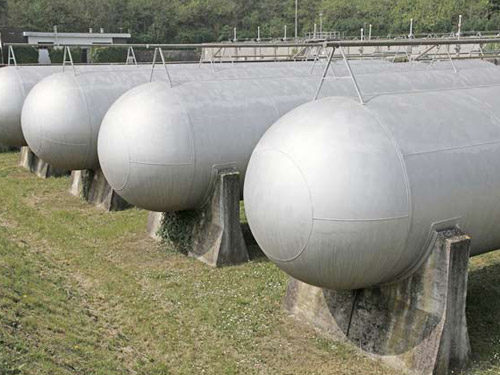
Many gas products (hydrocarbon and non-hydrocarbon based) are transported and stored at low temperatures.
The liquefied product must then return to its gaseous state to be fed into transmission and distribution grids. Common examples of these products are propane, butane, nitrogen, oxygen, and liquefied natural gas. There are several liquid-gas vaporization methods used. Selecting the optimum process depends on plant site location, climate conditions, and throughput capacities.
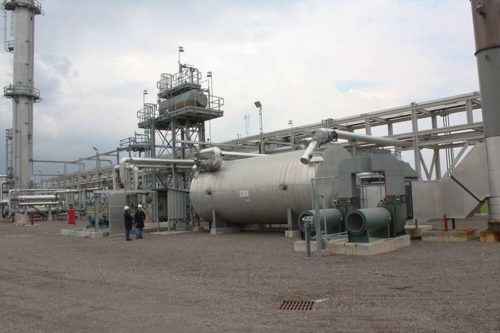
The vaporizing process typically takes place at high pressure using a series of heat exchangers to gradually warm the liquefied gas until its temperature rises above 0°C.
Depending on environmental conditions, various thermal fluid systems using glycol-water, hot oil, or hot water are all options for heating the gas to the desired temperature. With today’s high energy prices and concerns over the environment, closed-loop recirculation systems and waste heat recovery play an important role in conservation efforts for this and other gas production processes. Our engineers are experienced with a range of alternative solutions and offer insight into which is best for your application.
Plant Utility Heating
Leave a CommentTwo categories of heaters are available for plant utility heating.
If you are interested in a plant utility heating system, keep in mind that heating systems can be divided into two distinct categories: direct and indirect. In the case of direct-fired systems, the medium which is to be heated comes into direct contact with an electric heating element or the products of combustion. While indirect heat systems, such as process bath heaters, utilize a heating medium which is used to distribute heat to the desired locations via the chosen medium. There are a few factors that must be weighed when selecting plant utility heating equipment.
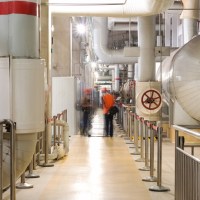
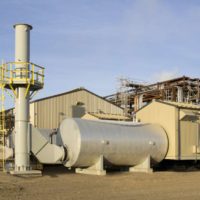
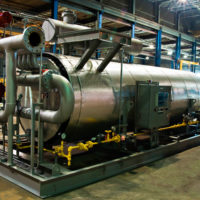
Direct-fired heating systems are cost-effective, able to achieve high process temperatures, and are often ideal for dedicated applications. For applications in which heat is desired in multiple areas, such as pre-heating of combustion gas and process reboilers, indirect heating is typically the preferred choice. Our team of engineers at Sigma Thermal can assist customers with selecting the ideal heating system for their specific application.
The heat from indirect heating systems may be supplied via steam, oil, or a water/glycol mixture. Steam has the advantage of being a very inexpensive and efficient heat transfer medium capable of achieving high temperatures at superheated conditions. Oil mixtures are capable of operating at temperatures up to 750°F and water/glycol up to 350°F (under blanket), both eliminate the need for costly high-pressure rated systems. Once again, the optimal choice is dependent on a number of factors and can be evaluated based on the specific application.
Seal Gas Heating
Leave a CommentIn centrifugal compressors, a dry gas seal is used to prevent leakage of the process gas into the environment.
Typical dry gas seals have a tandem configuration, providing a back-up seal should the primary seal fail. These seals operate at high pressures using a high purity seal gas. The high pressure gas injected into the seal must be heated to prevent condensation from entering the seal as well as to ensure that the gas does not condense once it has entered the seal. If the gas condenses, the pressure in the seal will be lost and process gas can escape.
Sigma Thermal produces precision high pressure heaters, which average 10 kw to 30 kw, for seal gas applications. Heaters are typically constructed of stainless steel and designed to provide the high quality dry gas required for operation of this type of seal. With industry leading experience and engineering knowledge, we offer both stock and custom designed industrial heating products that are used in a variety of demanding applications.
Condensate Stabilizers
Leave a CommentTo introduce natural gas into the pipeline, the gas stream must meet requirements related to its stability and purity.
Coming from the ground, natural gas is a mixture of hydrocarbons, including volatile light hydrocarbons which can cause dangerously high vapor pressures in upstream processing equipment. To remove light hydrocarbons from the gas stream, condensate stabilizers are often used at the well site. The condensate stabilizer flashes the lighter gases off of the gas stream by closely regulating the temperature and pressure of the stream through the stabilizer. Using this method, volatile hydrocarbons can be recovered from the gas, while the heavier hydrocarbons are condensed and remain as a liquid for transport.
The gas stream can undergo multiple iterations of this operation, at varying temperatures, to separate the different gas streams such as ethane, propane, and butane, for market. These light hydrocarbons are collected in compressors for use elsewhere, while the heavy liquefied natural gas can be collected into tanks or fed into the pipeline, as desired. Heating for condensate stabilizer processes is typically performed using indirect systems like hot oil through heat exchangers, or electric heaters for electric heating, rather than direct-fired gas heating to reduce safety risks and environmental emissions. Sigma Thermal has a wide breadth of experience in creating heaters and skids for the oil and gas processing industries and can assist customers in selecting the optimal thermal system for their processing needs.
Jacketed Reactor Heating & Cooling
Leave a CommentIn reactors, heating and cooling jackets are used to remove heat from exothermic reactions or provide the needed heat required to produce the desired endothermic reactions.
Steam jackets that operate at high pressures can pose safety issues, especially when hazardous chemicals are being used within the reactor. In contrast, thermal fluid systems can provide constant processing temperatures up to 800°F and operate at lower pressures, negating the need for ASME pressure vessel certification in many instances. In addition, thermal fluid systems are simple to maintain and do not pose the scale formation or corrosion risks associated with pressurized steam systems.
Depending on the specified operating temperature, thermal oil or water/glycol mixtures are generally used for the heating and cooling of jacketed reactors. At Sigma Thermal, we produce a range of thermal fluid heating systems suited for reactor heating and cooling applications. If additional customization is desired, our engineers can develop custom designs based on any set of operating parameters






